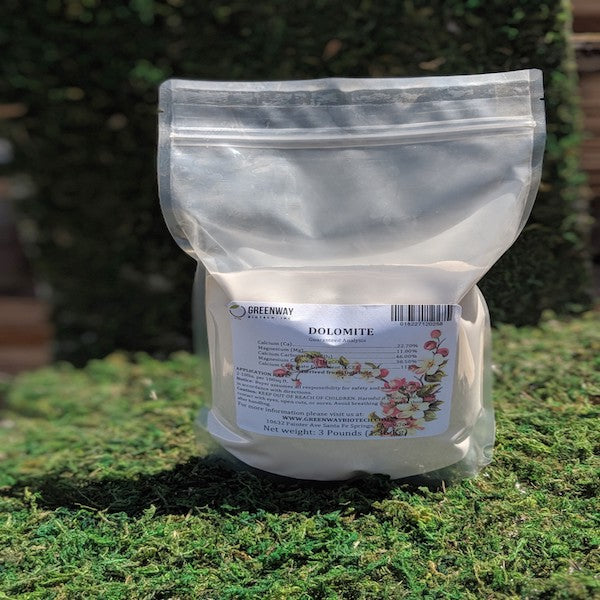The Helpful Benefits of Dolomite Lime in Your Garden
•Posted on May 23 2015

Want to know one of the biggest secrets for garden health? Maintaining the right pH balance in your soil! Not many people are aware of this, but plant health and soil health go hand in hand.
In fact, a major component of soil health is soil pH.
In gardening, this is a measure of the acidity and alkalinity of soils.
Certain plants favor specific pH levels over others so keeping your soil at the right pH level can do wonders for your plants.
Dolomite is one product you can use to change your soil's pH level.
Find out how Dolomite can benefit your garden, below.
What is Dolomite?
Dolomite is a limestone compound containing calcium and magnesium.
The best mixtures contain 8 to 12 percent magnesium and 18 to 23 percent calcium.
These elements influence the soil pH while providing valuable nutrients to your plants.
It's helpful to know Dolomite can often contain sodium, but it should only be 2 percent or less.
More sodium can change the salinity of your soil, which can kill many plants.
Why Use Dolomite?
1. To Adjust Soil pH
One reason gardeners use dolomite is to change the acidity, or pH, of their soil.
To determine your soil's pH level, you'll want to start with a soil pH test, which you can buy at garden centers.
Most plants do best with a pH of 6.0 to 7.4.
If your soil registers with a pH of 5.9 or below, dolomite can raise the pH to make the soil more alkaline and plant-friendly.
However, some plants prefer acidic soils, where the pH is lower, so consider your plants' specific needs before adding dolomite.

2. To Add Necessary Nutrients
Another reason to use dolomite is simply to provide your plants with the nutrients they need.
Some plants such as tomatoes, need extra calcium as they grow, and dolomite is an excellent way to provide that nutrient.
When to Use Dolomite
Apply dolomite during the following times for the greatest efficiency:
In the Spring/Fall
You can add dolomite to your yard, flower beds and vegetable gardens any time there's no frost or freezing temperatures - Spring or Fall are perfect times for this!
Pick a non-rainy day to apply dolomite so the dolomite won't wash off the soil before it's absorbed.

Before Planting
With vegetables and other plants that need extra calcium, adding dolomite 2 to 3 weeks before planting allows the product enough time to break down in the soil to give your seeds an extra boost.
Then you can add more as necessary while the plants grow.
How to Apply Dolomite
If you have an empty garden where you plan to plant flowers or vegetables:
- Mix dolomite into the top 6 inches of soil before planting.
- To change the soil's pH, determine how much dolomite you need and spread it on top of the soil.
For example, if your soil has a pH of 5.5 and you want to raise it to closer to 6.5, add 5 pounds of dolomite per 100 square feet of space -- that would be equivalent to a 10-by-10-foot bed or a 5-by-20-foot bed.
To prevent burning existing plants, spread the applications throughout the growing season.
Whether your soil pH isn't where it needs to be or your plants could use an extra dose of calcium and magnesium, applying Dolomite is a step in the right direction.
Shop our Dolomite powder below and get growing!

Comments
1 Comments
-

Posted by Taylor Hansen | October 02, 2020
Leave a CommentI never knew that dolomite can be added during the Fall so the garden absorbs the nutrients. Since it’s now Fall, I want to add more nutrients to my garden for all my flowers. I’ll have to find some dolomite that can work with my plants. https://flindersdolomite.com.au/dolomite